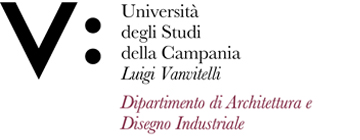Giulia CERIANI SEBREGONDI
Insegnamento di STORIA DEL GIOIELLO
Corso di laurea in DESIGN PER LA MODA
SSD: ICAR/18
CFU: 6,00
ORE PER UNITÀ DIDATTICA: 48,00
Periodo di Erogazione: Secondo Quadrimestre
Italiano
| Lingua di insegnamento | ITALIANO |
| Contenuti | L’insegnamento illustra la storia del design del gioiello in Occidente attraverso i secoli, dall’antichità al giorno d’oggi, in rapporto ai contesti sociali e culturali. L’esposizione degli argomenti si articola cronologicamente in lezioni tematiche, promuovendo una lettura storico-critica del sistema d’istanze materiali, formali, artistiche, ed economiche legate al gioiello e agli accessori preziosi. |
| Testi di riferimento | - Anderson J. Black, Storia dei gioielli, a cura di Franco Sborgi, Città di Castello, Odoya, 2019 (qualsiasi edizione). |
| Obiettivi formativi | - Acquisire conoscenze e capacità di comprensione dei principali episodi della storia del design del gioiello in Occidente dall’antichità al giorno d’oggi, in rapporto al loro contesto, sia negli aspetti materiali che in quelli formali. Attraverso l’illustrazione di casi di studio e contesti di particolare significato storico-culturale, si svilupperanno conoscenza e capacità di comprensione delle relazioni tra accessori preziosi, cambiamenti sociali, di gusto e produttivi succedutisi nel tempo. |
| Prerequisiti | Nozioni di base di storia e di storia dell’arte; Conoscenze di storia del design per la moda occidentale. |
| Metodologie didattiche | L’insegnamento si articola in 48 ore di didattica frontale suddivise in: lezioni frontali con supporto d’immagini, anche con il coinvolgimento degli studenti al fine di stimolare conoscenze e capacità di comprensione, capacità di trarre conclusioni, abilità comunicative; presentazione in aula dello stato di avanzamento del tema di approfondimento concordato; eventuali sopralluoghi; eventuali seminari con esperti. |
| Metodi di valutazione | La verifica dell’apprendimento sarà effettuata con un esame orale individuale finale. Gli studenti dovranno presentare e discutere gli elaborati prodotti durante l’insegnamento relativi al tema di approfondimento concordato, nonché dimostrare la conoscenza dei temi trattati durante le lezioni, e la capacità di comprensione e di trarre conclusioni su tali argomenti, inquadrandoli nel loro ambito storico, attraverso un colloquio articolato in circa tre domande. Parametri di valutazione saranno: capacità di collegamenti critici, di sintesi, di organizzazione dell'esposizione, di uso del lessico specialistico. |
| Altre informazioni | Le slides utilizzate durante le lezioni saranno messe a disposizione dopo ogni lezione sul sito web dell’insegnamento. |
| Programma del corso | L’insegnamento illustra la storia del design del gioiello in Occidente attraverso i secoli, dall’antichità al giorno d’oggi, in rapporto ai contesti sociali e culturali. L’esposizione degli argomenti si articola cronologicamente in lezioni tematiche su casi di studio e contesti di particolare significato storico-culturale, analizzando sia gli aspetti materiali che quelli formali, ed evidenziando le relazioni tra gioielli, cambiamenti sociali, di gusto e produttivi succedutisi nel tempo. |
English
| Teaching language | Italian |
| Contents | The teaching illustrates the history of Western jewelry design through the centuries, from antiquity to the present day, in relation to social and cultural contexts. The exposition of the topics is organized chronologically into thematic lessons, promoting a historical-critical reading of the complex system of material, formal, artistic, and economic issues related to jewelry. |
| Textbook and course materials | - Anderson J. Black, A History of Jewelry. Five Thousands Years, Colcester, Park Lane, 1981 (qualsiasi edizione). |
| Course objectives | - To acquire knowledge and understanding of the main episodes in the history of Western jewelry design in from antiquity to the present day, in relation to their context, both in the material and formal aspects. Through the illustration of case studies and contexts of historical and cultural significance, knowledge and understanding of the relationships between jewelry and social, taste and production changes occurred over time, will develop. |
| Prerequisites | Basics of history and art history; Knowledge of History of Western Fashion Design. |
| Teaching methods | The teaching is organized into 48 hours of frontal didactic activities divided into: frontal lessons with image support, also with the involvement of students to stimulate knowledge and understanding, ability to draw conclusions, communication skills; presentation by the students in the classroom of the progress of the agreed in-depth topic; possible on-site visits; possible seminars with external experts. |
| Evaluation methods | Verification of learning will be carried out with a final individual oral exam. Students will have to present and discuss the material produced during teaching related to the agreed in-depth topic, as well as demonstrate knowledge of the topics covered during the lessons, and the ability to understand and draw conclusions on these topics, framing them in their historical context, through an interview divided into about three questions. Evaluation parameters are ability to draw conclusions, to synthesize, to organize the exposition, to use the specialistic vocabulary. |
| Other information | The slides used during the lesson will be available after the lesson on the institutional web page of the teaching. |
| Course Syllabus | The course illustrates the history of Western jewelry design through the centuries, from antiquity to the present day, in relation to social and cultural contexts. The exposition of the topics is organized chronologically into thematic lessons on case studies and contexts of historical-cultural significance, analyzing both the material and formal aspects, and highlighting the relationships between jewelry and social, taste and production changes that have taken place over time. |








